Introduction
In recent years, the music industry has witnessed a transformative shift with the rise of virtual concerts. As technology continues to evolve, musicians and audiences alike are embracing this new way of experiencing live music. In this article, we will explore the concept of virtual concerts, their impact on the music industry, and what the future holds for this innovative trend.
The Evolution of Live Music
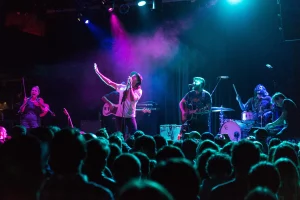
Live music has always been a vital part of the cultural fabric, bringing people together to celebrate and enjoy shared experiences. Traditionally, attending a live concert meant traveling to a venue, standing in long lines, and possibly facing sold-out shows. While the energy of a live crowd and the thrill of seeing artists perform in person are irreplaceable, virtual concerts offer an alternative that expands the accessibility and inclusivity of live music.
What Are Virtual Concerts?
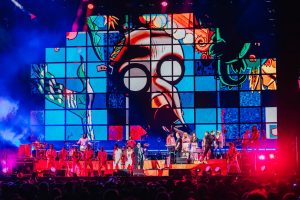
Virtual concerts leverage digital platforms to stream live performances to audiences worldwide. These events can range from simple live streams on social media to immersive experiences using virtual reality (VR) technology. By using digital tools, artists can perform from any location, and fans can enjoy the show from the comfort of their homes.
Understanding Virtual Concerts
Virtual concerts are live performances that take place online, allowing artists to reach audiences around the world without the need for physical venues. These events can be streamed via various platforms, including social media, dedicated concert apps, and virtual reality environments. This format offers a unique way for fans to connect with their favorite artists, providing an immersive experience that traditional concerts cannot match.
The Rise of Virtual Concerts
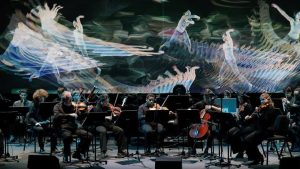
The COVID-19 pandemic played a significant role in the acceleration of virtual concerts. With physical venues closed and gatherings restricted, many artists turned to online platforms to continue performing. Notable examples include Travis Scott’s concert in the video game Fortnite and Billie Eilish’s live-streamed performance for her fans. These events garnered millions of views, showcasing the potential of virtual concerts to reach global audiences.
Benefits of Virtual Concerts

- Accessibility: Virtual concerts break down geographical barriers, allowing fans from different parts of the world to attend without the need for travel.
- Affordability: With lower overhead costs, many artists can offer tickets at a more affordable price point, making live music more accessible to a broader audience.
- Enhanced Experience: Virtual concerts often incorporate innovative technology, such as augmented reality (AR) and virtual reality (VR), to create immersive environments that enhance the overall experience.
- Recordings and Replays: Fans can revisit performances, creating lasting memories and allowing artists to reach audiences who may have missed the live event.
- Artist Connection: Virtual concerts often allow for some form of interaction, like chatting or sending emojis, which can help fans feel connected to the artist, even from afar.
Challenges Faced by Virtual Concerts
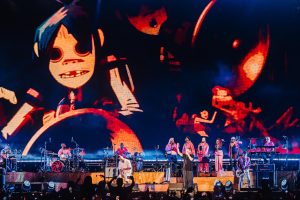
Despite their many advantages, virtual concerts also face several challenges:
- Technical Issues: Internet connectivity can be a significant barrier, with buffering and lag disrupting the experience for some viewers.
- Lack of Physical Presence: The absence of a live audience can affect the energy of a performance, making it challenging for artists to connect with fans in real-time.
- Monetization: While some virtual concerts have been successful, artists must navigate the complexities of online ticket sales and streaming rights to ensure they receive fair compensation.
- Screen Fatigue: With many people already spending a lot of time on screens, some may feel tired or bored of watching events online. Keeping the audience engaged is crucial.
The Future of Virtual Concerts
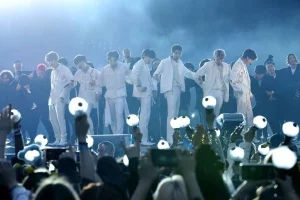
As technology advances, the future of virtual concerts looks promising. Innovations such as 5G networks, which offer faster internet speeds, will improve the streaming experience, reducing technical issues. Additionally, the integration of AI and machine learning can personalize concert experiences, tailoring performances to individual preferences.
1. New Opportunities for Artists
Virtual concerts give artists new chances to express themselves. They can try different styles and concepts that they might not attempt in a physical venue. For instance, an artist can create a themed virtual concert that might include special effects, lighting, and visuals that fit the theme perfectly. This creativity can make each concert a unique experience for fans.
2. Engaging Younger Audiences
Younger audiences, especially those who grew up with technology, are drawn to virtual concerts. They appreciate the convenience and the ability to interact with their favorite artists in real-time. This connection can create a sense of community among fans, making them feel like they are part of something special, even from their own homes.
3. Combining Live and Virtual Events
Many artists are now exploring hybrid concerts that combine live and virtual elements. This means a small audience can attend in person while others join online. This setup can create a lively atmosphere for those present, while still allowing fans from anywhere in the world to participate. Hybrid concerts may become a popular choice in the future, blending the best of both worlds.
4. Impact on Music Festivals
Virtual concerts are also changing music festivals. Many festivals have moved online, offering performances from multiple artists over several days. This allows fans to experience a festival atmosphere from home. It can also help smaller artists gain exposure alongside well-known acts, making festivals more diverse and exciting.
Comparison Table: Virtual Concerts vs. Traditional Concerts
| Feature | Virtual Concerts | Traditional Concerts |
|---|---|---|
| Accessibility | Global reach, no travel required | Limited to venue capacity and location |
| Ticket Pricing | Often more affordable | Prices can vary significantly based on venue and artist |
| Audience Interaction | Limited, often through chat or reactions | Direct interaction with performers |
| Performance Atmosphere | Unique, often enhanced with technology | Lively, energetic atmosphere with a live crowd |
| Experience Replay | Available for later viewing | Typically a one-time event |
Analysis Table: The Impact of Virtual Concerts on the Music Industry
| Factor | Impact |
|---|---|
| Audience Engagement | Increased global reach and interaction |
| Revenue Streams | New models for monetization through streaming and merchandise |
| Artist Promotion | Opportunities for independent artists to gain exposure |
| Music Distribution | Shift towards digital platforms for releases |
| Live Music Evolution | Redefining the live music experience |
Conclusion
Virtual concerts are poised to play a significant role in the future of live music. As artists and fans adapt to this new landscape, the potential for innovation and creativity will only grow. By embracing technology, the music industry can create unforgettable experiences that resonate with audiences worldwide. While challenges remain, the benefits of virtual concerts suggest they are not merely a temporary solution but a lasting evolution in the way we experience live music.











